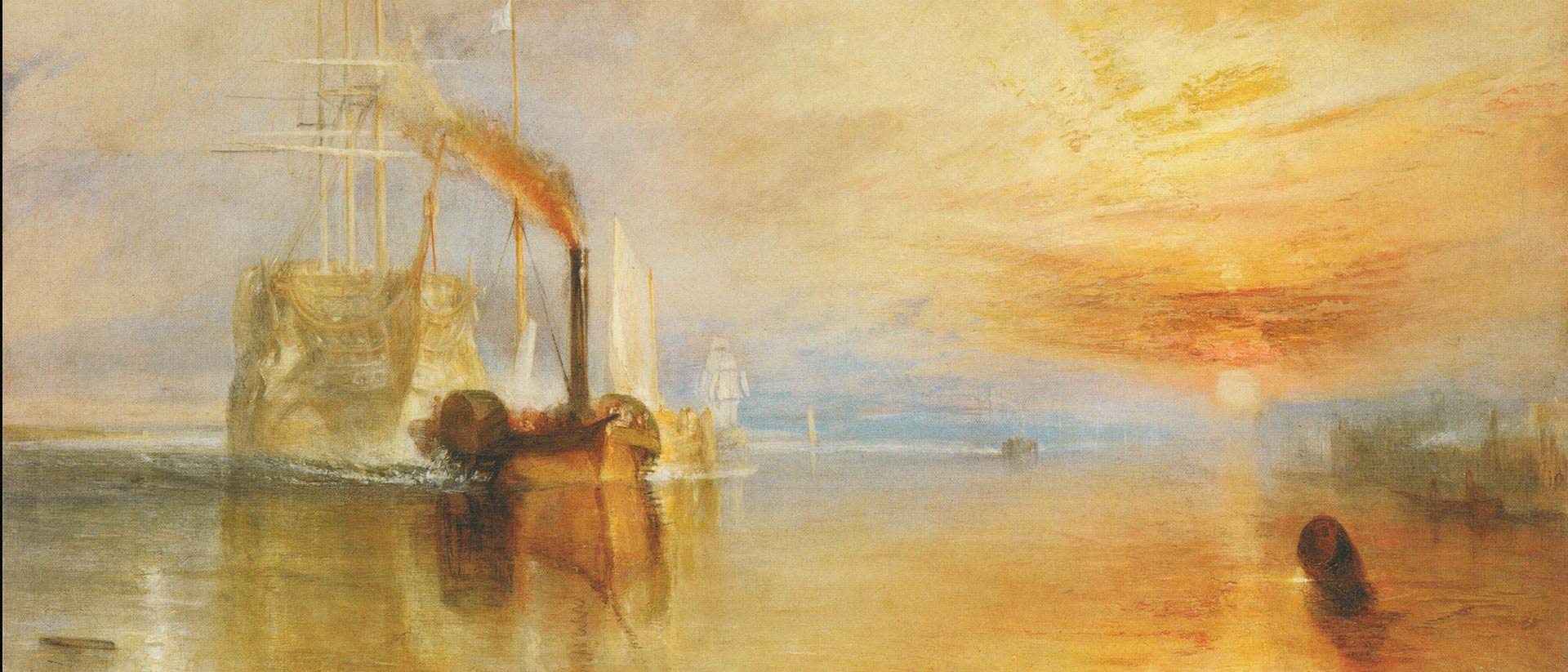
The man who felt the light

Smoothly the waves hit the black gondola, which rocks leisurely back and forth on the Canal Grande right in the middle of Venice. The gondolier tries to keep the barque as still as possible. On a mild evening in the late summer of 1819 the evening light gushes smoothly and red gold colored past the canal. With quick pencil strokes William Turner sketches what he sees, impressive palaces, venerable churches with their playful facades and boats sliding unhurriedly above the water. Turner needed hardly longer than five minutes to draw such a sketch. However, what he made of it afterwards is today known as one of the best-known paintings in the world. William Turner felt the light. Whilst allegedly producing erratic sketches in a rocking gondola, the lighting mood memorized itself deep down to his core. He added this later to his sketches, he flooded his pictures with light and thus created unique artwork. Turner visited Venice three times in his life and every single time he raved about the quickly changing gradations of light above the lagoon water once again.
Change of location to England, twenty years later: again the sky above the water of the River Thames shines in soft red-yellowish tones. Right in the middle two boats, a small steamer towing a big sailboat. The water shimmers bluish, melancholic. The picture “The Fighting Temeraire” drawn in 1839 is likely one of the best-known artistic works of William Turner. In 2005 it has been voted to the Greatest Painting in Britain according to a BBC-poll.
William Turner (born 1775) painted light, he made it shine in every range of color and let structures become blurred in it; he became one of the most famous painters in the history of art. He has been a scholar at the Royal Academy of Arts already at the age of 14 and exhibited his first painting only one year after. But Turner grew into a challenging zeitgeist. He has been an egomaniac, a taciturn loner, he was quirky and eccentrically. But like no one else he was able to capture light and natural moods in his pictures. He sensitively immortalized the bright glister of the sky above Venice just like the golden sunset above the Rhine Valley near Heidelberg. He captured the historical moment when the hissing flames merciless ate its way through the Parliament house in London. Shadowy he painted a railroad on its way through a glimmering bridge submerged in bright light. He was never released of his longing for water with its mystical reflections. Furthermore, he painted Rome with its countless lighting moods in more than 2000 sketches and paintings in striking earthy and ochre colors.
Turners extremely sensitive paintings do not reflect his frame of mind altogether. Turner spit on his paintings, he was famous for doing so. He used self-made colors such as an odd brown powder. No one knows exactly what he merged together in detail. He was driven, one seldom saw him calmly in front of his easel.
Turners’ future works have been influenced by a natural disaster. In 1815 the volcano Tambora located near the Pacific erupted. Its dust particles were carried to the whole world going directly into the atmosphere, which caused a global climate cooling. Due to the dust particles sunrises and sunsets in Europe changed dramatically. Because of the tiny particles light was refracted more often than usually when passing the atmosphere by which blue light was filtered out almost completely and only the long-waved proportion of radiation reached the earth and therefore the human eye. For this reason sunsets and sunrises during this time have been incomparably magnificent. They ornamented the sky in all shades from red, orange and violet to occasionally blue and green tones. And exactly that was reflected by Turners’ works.
In Turners day one was able to see better what light was about from a physical point of view. People started to deal with natural phenomenon and wanted to understand better what was going on with the substance without life on earth would not be possible at all. Natural sciences and technology gained more and more in importance. In 1826 Joseph Nicéphore Niépce succeeded in capturing light for the first time permanently on paper using a camera. He photographed the view out of his study and needed eight hours to do so. What came out was a blurry black and white image. Photography was therefore no competition for Turner yet. He met with his pictures the sense of time because he not just dealt with mere nature but contextualized it to the introducing industrialization and mechanization. He sharpened the perception of incidence of light and smallest differences in brightness. Turner ranks as one of the most significant theorists of color schemes of his time period: he studied color effects and started to juxtaposition complementary colors. In 1851 Turner died and made over his complete work, more than 300 oil paintings, 20.000 drawings and watercolors, to the British government. With that everyone was able to see how Turner felt light.












